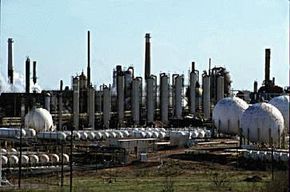The Source of LP Gas
LP gas is a fossil fuel, like oil and natural gas. It can be refined from oil and natural gas the same way gasoline is refined from crude oil. While most energy companies are not focused on LP gases, they produce them nonetheless because they are a byproduct of the refining process for other fuels.
When an energy company draws natural gas from the ground, about 90 percent of it is methane. The rest is in the form of various LP gases, which the company separates from the methane before the methane is fed into pipelines for use in our homes. The amount of LP gas that comes from natural gas varies, but it is usually from 1 to 3 percent [ref].
Advertisement
LP gases are separated from crude oil, as well. The refining process produces about a 3 percent yield of LP gases, although if refineries were retooled to focus on LP-gas extraction, that number could be as high as 40 percent [ref]. See How Oil Refining Works to learn about the process.
Next, we'll find out about some of the many uses for LP Gas.
